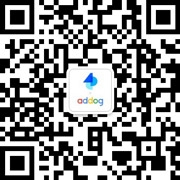
本案例默认翻译为中文,点击可切换回原语言
已切换成原语言,点击可翻译成中文
寻求乐高乐园
案例简介:活动描述 我们为孩子们重新设计了全球定位系统。使用谷歌地图,我们将乐高乐园的故事与全球定位系统数据结合在一起,将手机的全球定位系统转化为沉浸式的乐高乐园冒险。使用谷歌地图数据实时绘制 GPS 体验,根据路线的任何变化进行调整。每一次旅行都是基于特定的路线,就像传统的全球定位系统一样,但是孩子们在应用程序中看到的是他们旅行中独一无二的。为了策划孩子们的体验,我们选择了 5,000 多个适合孩子的地标,并将其融入体验中,这样每个地标都有新的东西可以发现。通过将现实世界的目的地整合到想象中的故事情节和游戏中,每一次旅行都是一次独特的冒险。孩子们不仅被告知他们旅行的进展,他们还被周围的环境所吸引和娱乐。随着孩子们与父母分享新的发现,这次旅行成为一个互动和教育游戏。 战略 佛罗里达乐高乐园是一个 “为孩子们带头而建” 的主题公园。“但通往乐高乐园的道路不是。在开车过程中,孩子们几乎没有控制。研究表明,父母喜欢公路旅行,因为它让他们对旅行有更多的控制权。有了旅行和导航应用程序,父母配备了帮助他们征服旅程的工具,只需按下按钮,就可以为浴室休息、餐饮选择和酒店找到进站。但是孩子们仍然焦急地问 “我们到了吗?”?“我们意识到这个问题的根源是孩子们在公路旅行中感到失控。辞职后,没有任何关于他们周围环境的信息,他们变得沮丧。当他们问 “我们在那里吗?”,他们真的想知道 “我们什么时候到达那里?” “我们现在在哪里?” 和 “前方有什么?” 结果 通过将实时谷歌地图数据与儿童琐事和主题故事情节相结合,我们为家庭提供了一种新的方式来体验乐高乐园。在推出后的 30 天内,该应用记录了 39,061 英里的汽车旅行。这是 639 小时幸福的 “我们还在吗” -- 更少的家庭时间。以这种速度,我们有望在夏季结束前获得 156,000 英里和 2,500 多小时的比赛。应用程序内花费的平均时间是 9.38 分钟,这表明孩子们在旅行中保持对乐高乐园的探索,并喜欢实时观看新的地标和琐事出现。通过使用数据、游戏化和创造力,迄今为止,我们已经能够为 984 个家庭提供一种新的方式来体验公路旅行,让孩子们参与进来,学习并开始自己的教育对话。 概要 佛罗里达州乐高乐园是佛罗里达州奥兰多的众多主题公园和旅游景点之一,该地区吸引了来自世界各地的游客。但与位于城市范围内的竞争对手不同,乐高乐园距离最近的机场有一个多小时的车程。对于佛罗里达乐高乐园的目标受众 -- 有 2-12 岁孩子的家庭 -- 来说,这种驱动是他们是否选择参观公园的决定因素。佛罗里达乐高乐园想找到一种方法,让整个家庭都能像公园一样开心 -- 无论他们是开车一小时还是 16 小时到达那里。 执行 GPS 体验使用谷歌地图数据,手动识别美国 5,450 多个地标的精确地理坐标。当用户进入他们的起始位置时,应用程序计划一条通往乐高乐园的路线,沿途吸引 60 个感兴趣的点。然后,每个地标都与一项活动相匹配 -- 从有趣的事实和测验到主题游戏。当孩子们旅行并在他们的路线上前进时,他们会发现他们周围的地标,并解锁游戏来推进故事。谷歌数据被集成到乐高主题环境中。在每个地标,游戏都会查阅其数据库,以了解要显示的地标类型。每个乐高故事都设计了一个独特的地标。然后,游戏通过从数据库中绘制以确保孩子们参与进来来确定正在播放的故事。
寻求乐高乐园
案例简介:CampaignDescription We reinvented the GPS for kids. Using Google Maps, we brought LEGOLAND stories together with GPS data to transform a phone’s GPS into an immersive LEGOLAND adventure. The GPS experience is mapped in real time using Google Maps data, adjusting to any changes in the route. Every trip is based on a specific route, just as with a traditional GPS, but what kids see in the app is unique to their trip. To curate the experience for kids, more than 5,000 kid-friendly landmarks were chosen and integrated into the experience so each landmark has something new to discover. By integrating real-world destinations into imaginary storylines and games, every trip is a unique adventure. Not only are kids informed about their trip’s progress, they’re also engaged and entertained by their surroundings. As kids share new discoveries with their parents, the trip becomes an interactive and educational game. Strategy LEGOLAND Florida is a theme park “built for kids to take the lead.” But the road to LEGOLAND isn’t. During the car ride, kids have little control. Research showed that parents love road travel because it gives them more control over the trip. Armed with travel and navigation apps, parents are equipped with tools that help them conquer the journey, finding pit stops for bathroom breaks, dining options and hotels with the push of a button. But kids were still anxiously asking “ARE WE THERE YET?” We realized the source of this question was that kids felt a loss of control during road travel. Resigned to the backseat, without any information about their surroundings, they became frustrated. When they were asking “ARE WE THERE YET?”, they really wanted to know “When will we get there?” “Where are we now?” and “What’s up ahead?” Outcome By integrating real-time Google Maps data with trivia for kids and themed storylines, we gave families a new way to experience LEGOLAND from the moment they leave home. In just 30 days since launch, the app recorded 39,061 miles of car travel. That’s 639 hours of blissfully “ARE WE THERE YET”-less family time. At this rate, we’re on track to get 156,000 miles and more than 2,500 hours of play by the end of summer. The average time spent in-app is 9.38 minutes, revealing that kids are keeping Quest to LEGOLAND open during their trip and enjoy watching new landmarks and trivia appear in real time. Through the use of data, gamification and creativity, to date we’ve been able to offer 984 families a new way to experience a road trip, with kids engaged, learning and starting educational conversations themselves. Synopsis LEGOLAND Florida is one of many theme parks and tourist attractions in the Orlando, Florida, area that attracts visitors from all over the world. But unlike its competitors that are conveniently located within city limits, LEGOLAND is more than an hour drive away from the nearest airport. For LEGOLAND Florida’s target audience — families with kids ages 2-12 — this drive is the determining factor on whether they choose to visit the park. LEGOLAND Florida wanted to find a way to make the drive as fun as the park itself for the entire family — whether they were driving one hour or 16 hours to get there. Execution The GPS experience uses Google Maps data and manually identifies the exact geo-coordinates of more than 5,450 landmarks across the US. When a user enters their starting location, the app plans a route to LEGOLAND, pulling in 60 points of interest along the way. Each landmark is then matched with an activity — from fun facts and quizzes to themed games. As kids travel and progress on their route, they discover the landmarks around them and unlock games to progress in the story. The Google data is integrated into a LEGO-themed environment. At each landmark the game consults its database to understand the type of landmark to display. A unique landmark was also designed for each one of the LEGO stories. The game then determines the story being played by drawing from a database to ensure kids are engaged.
Quest to Legoland
案例简介:活动描述 我们为孩子们重新设计了全球定位系统。使用谷歌地图,我们将乐高乐园的故事与全球定位系统数据结合在一起,将手机的全球定位系统转化为沉浸式的乐高乐园冒险。使用谷歌地图数据实时绘制 GPS 体验,根据路线的任何变化进行调整。每一次旅行都是基于特定的路线,就像传统的全球定位系统一样,但是孩子们在应用程序中看到的是他们旅行中独一无二的。为了策划孩子们的体验,我们选择了 5,000 多个适合孩子的地标,并将其融入体验中,这样每个地标都有新的东西可以发现。通过将现实世界的目的地整合到想象中的故事情节和游戏中,每一次旅行都是一次独特的冒险。孩子们不仅被告知他们旅行的进展,他们还被周围的环境所吸引和娱乐。随着孩子们与父母分享新的发现,这次旅行成为一个互动和教育游戏。 战略 佛罗里达乐高乐园是一个 “为孩子们带头而建” 的主题公园。“但通往乐高乐园的道路不是。在开车过程中,孩子们几乎没有控制。研究表明,父母喜欢公路旅行,因为它让他们对旅行有更多的控制权。有了旅行和导航应用程序,父母配备了帮助他们征服旅程的工具,只需按下按钮,就可以为浴室休息、餐饮选择和酒店找到进站。但是孩子们仍然焦急地问 “我们到了吗?”?“我们意识到这个问题的根源是孩子们在公路旅行中感到失控。辞职后,没有任何关于他们周围环境的信息,他们变得沮丧。当他们问 “我们在那里吗?”,他们真的想知道 “我们什么时候到达那里?” “我们现在在哪里?” 和 “前方有什么?” 结果 通过将实时谷歌地图数据与儿童琐事和主题故事情节相结合,我们为家庭提供了一种新的方式来体验乐高乐园。在推出后的 30 天内,该应用记录了 39,061 英里的汽车旅行。这是 639 小时幸福的 “我们还在吗” -- 更少的家庭时间。以这种速度,我们有望在夏季结束前获得 156,000 英里和 2,500 多小时的比赛。应用程序内花费的平均时间是 9.38 分钟,这表明孩子们在旅行中保持对乐高乐园的探索,并喜欢实时观看新的地标和琐事出现。通过使用数据、游戏化和创造力,迄今为止,我们已经能够为 984 个家庭提供一种新的方式来体验公路旅行,让孩子们参与进来,学习并开始自己的教育对话。 概要 佛罗里达州乐高乐园是佛罗里达州奥兰多的众多主题公园和旅游景点之一,该地区吸引了来自世界各地的游客。但与位于城市范围内的竞争对手不同,乐高乐园距离最近的机场有一个多小时的车程。对于佛罗里达乐高乐园的目标受众 -- 有 2-12 岁孩子的家庭 -- 来说,这种驱动是他们是否选择参观公园的决定因素。佛罗里达乐高乐园想找到一种方法,让整个家庭都能像公园一样开心 -- 无论他们是开车一小时还是 16 小时到达那里。 执行 GPS 体验使用谷歌地图数据,手动识别美国 5,450 多个地标的精确地理坐标。当用户进入他们的起始位置时,应用程序计划一条通往乐高乐园的路线,沿途吸引 60 个感兴趣的点。然后,每个地标都与一项活动相匹配 -- 从有趣的事实和测验到主题游戏。当孩子们旅行并在他们的路线上前进时,他们会发现他们周围的地标,并解锁游戏来推进故事。谷歌数据被集成到乐高主题环境中。在每个地标,游戏都会查阅其数据库,以了解要显示的地标类型。每个乐高故事都设计了一个独特的地标。然后,游戏通过从数据库中绘制以确保孩子们参与进来来确定正在播放的故事。
Quest to Legoland
案例简介:CampaignDescription We reinvented the GPS for kids. Using Google Maps, we brought LEGOLAND stories together with GPS data to transform a phone’s GPS into an immersive LEGOLAND adventure. The GPS experience is mapped in real time using Google Maps data, adjusting to any changes in the route. Every trip is based on a specific route, just as with a traditional GPS, but what kids see in the app is unique to their trip. To curate the experience for kids, more than 5,000 kid-friendly landmarks were chosen and integrated into the experience so each landmark has something new to discover. By integrating real-world destinations into imaginary storylines and games, every trip is a unique adventure. Not only are kids informed about their trip’s progress, they’re also engaged and entertained by their surroundings. As kids share new discoveries with their parents, the trip becomes an interactive and educational game. Strategy LEGOLAND Florida is a theme park “built for kids to take the lead.” But the road to LEGOLAND isn’t. During the car ride, kids have little control. Research showed that parents love road travel because it gives them more control over the trip. Armed with travel and navigation apps, parents are equipped with tools that help them conquer the journey, finding pit stops for bathroom breaks, dining options and hotels with the push of a button. But kids were still anxiously asking “ARE WE THERE YET?” We realized the source of this question was that kids felt a loss of control during road travel. Resigned to the backseat, without any information about their surroundings, they became frustrated. When they were asking “ARE WE THERE YET?”, they really wanted to know “When will we get there?” “Where are we now?” and “What’s up ahead?” Outcome By integrating real-time Google Maps data with trivia for kids and themed storylines, we gave families a new way to experience LEGOLAND from the moment they leave home. In just 30 days since launch, the app recorded 39,061 miles of car travel. That’s 639 hours of blissfully “ARE WE THERE YET”-less family time. At this rate, we’re on track to get 156,000 miles and more than 2,500 hours of play by the end of summer. The average time spent in-app is 9.38 minutes, revealing that kids are keeping Quest to LEGOLAND open during their trip and enjoy watching new landmarks and trivia appear in real time. Through the use of data, gamification and creativity, to date we’ve been able to offer 984 families a new way to experience a road trip, with kids engaged, learning and starting educational conversations themselves. Synopsis LEGOLAND Florida is one of many theme parks and tourist attractions in the Orlando, Florida, area that attracts visitors from all over the world. But unlike its competitors that are conveniently located within city limits, LEGOLAND is more than an hour drive away from the nearest airport. For LEGOLAND Florida’s target audience — families with kids ages 2-12 — this drive is the determining factor on whether they choose to visit the park. LEGOLAND Florida wanted to find a way to make the drive as fun as the park itself for the entire family — whether they were driving one hour or 16 hours to get there. Execution The GPS experience uses Google Maps data and manually identifies the exact geo-coordinates of more than 5,450 landmarks across the US. When a user enters their starting location, the app plans a route to LEGOLAND, pulling in 60 points of interest along the way. Each landmark is then matched with an activity — from fun facts and quizzes to themed games. As kids travel and progress on their route, they discover the landmarks around them and unlock games to progress in the story. The Google data is integrated into a LEGO-themed environment. At each landmark the game consults its database to understand the type of landmark to display. A unique landmark was also designed for each one of the LEGO stories. The game then determines the story being played by drawing from a database to ensure kids are engaged.
寻求乐高乐园
暂无简介
Quest to Legoland
暂无简介
基本信息
- 广告战役: #Legoland Florida Resort-设计与品牌-5fe9#
- 广告品牌: LEGOLAND Florida Resort
- 发布日期: 2000
- 行业领域: 互联网服务 , 游戏
- 媒体类别: 短视频
- 广告语言: 英语
- 媒介平台: 网络
- 获得奖项:
暂无评分
已有{{caseInfo.tatolPeople}}人评分
创作者
案例详情
涵盖全球100万精选案例,涉及2800个行业,包含63000个品牌
热门节日97个,23个维度智能搜索
-

项目比稿
品类案例按时间展现,借鉴同品牌策略,比稿提案轻松中标
-

创意策划
任意搜索品牌关键词,脑洞创意策划1秒呈现
-

竞品调研
一键搜索竞品往年广告,一眼掌握对手市场定位
-

行业研究
热词查看洞悉爆点,抢占行业趋势红利
登录后查看全部案例信息
如果您是本案的创作者或参与者 可对信息进行完善







